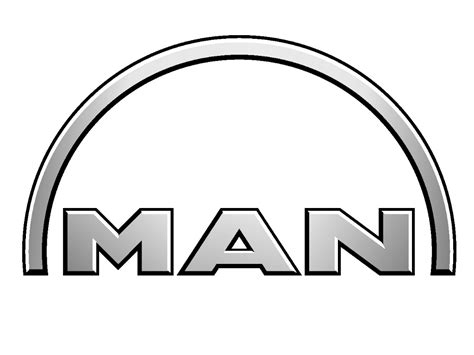For many men, a significant portion of their day is spent sitting at a desk, staring at a computer screen. While this might seem harmless, prolonged periods of inactivity and poor posture can lead to a host of musculoskeletal issues, with lower back pain being one of the most common and debilitating. A strong core is not just about aesthetics; it’s the foundation of all movement, providing stability to your spine and pelvis. For desk workers, cultivating a robust core is crucial for preventing discomfort and maintaining overall back health.
Understanding the Root of Desk-Related Back Pain
Sitting for extended periods puts significant stress on the lower back. It can lead to tight hip flexors, weak glutes, and a disengaged core. This imbalance pulls the pelvis forward, exaggerating the natural curve of the lower spine (lordosis) and compressing the spinal discs. Over time, this poor posture weakens the muscles that support your spine, making you more susceptible to strains, sprains, and chronic pain. Strengthening your core directly addresses these imbalances by providing the necessary support and stability.

The Indispensable Role of a Strong Core
Your core isn’t just your abs; it’s a complex network of muscles including your abdominals, obliques, lower back, pelvic floor, and diaphragm. These muscles work in synergy to stabilize your spine, transfer force between your upper and lower body, and maintain proper posture. When these muscles are weak, your spine bears the brunt of the load, leading to pain and injury. For men working desk jobs, a strong core acts as a natural back brace, protecting the spine and alleviating the strain caused by prolonged sitting.
Key Principles for Effective Core Training
Before diving into specific exercises, it’s important to understand the principles behind effective core training for back pain prevention. Focus on:
- Stability, not just flexion: Many traditional ab exercises focus solely on crunching. While useful, the core’s primary role is often anti-movement – resisting extension, flexion, rotation, and lateral flexion.
- Quality over quantity: Performing exercises with proper form is paramount to engaging the correct muscles and preventing further injury.
- Consistency: Regular, even short, core workouts are more effective than sporadic intense sessions.
- Breathing: Engaging your deep core muscles often involves proper diaphragmatic breathing.

Top Core Exercises for Men to Prevent Lower Back Pain
Here are some of the most effective core exercises for men, specifically chosen for their ability to build spinal stability and counteract the effects of desk work:
1. The Plank
The plank is a foundational anti-extension exercise that strengthens the entire core, including the deep transverse abdominis, obliques, and erector spinae. It teaches your body to brace and maintain a neutral spine under tension.
How to do it: Start in a push-up position, but support yourself on your forearms instead of your hands. Keep your body in a straight line from head to heels, engaging your glutes and abs. Avoid sagging your hips or raising your butt too high. Hold for 30-60 seconds, aiming for 3-4 sets.
2. Bird-Dog
This exercise enhances spinal stability and coordination by challenging your core to resist rotation and extension while moving your limbs. It’s excellent for improving proprioception and strengthening the lower back muscles.
How to do it: Start on all fours with your hands directly under your shoulders and knees under your hips. Keep your back flat. Slowly extend your right arm forward and your left leg straight back, keeping your core tight and hips level. Hold for a second, then return to the start. Alternate sides. Perform 10-12 repetitions per side for 3 sets.

3. Dead Bug
The Dead Bug is another fantastic anti-extension exercise that strengthens the deep core muscles without putting stress on the lower back. It requires control and precision.
How to do it: Lie on your back with your arms extended towards the ceiling and knees bent at a 90-degree angle, directly over your hips. Flatten your lower back against the floor. Slowly lower your right arm and left leg simultaneously towards the floor without letting your lower back arch. Stop just before they touch the ground, then return to the start. Alternate sides. Perform 10-12 repetitions per side for 3 sets.
4. Side Plank
The Side Plank is crucial for strengthening the obliques and quadratus lumborum, muscles vital for preventing lateral flexion and rotation of the spine. It’s an excellent counter-balance to the forward flexion often associated with desk work.
How to do it: Lie on your side, supporting your body with your forearm and the side of your foot. Keep your body in a straight line from head to heels. Engage your core and lift your hips off the floor. Hold for 30-60 seconds per side, aiming for 3-4 sets. For an easier modification, you can bend your knees and support yourself on your forearm and knees.

5. Glute Bridge
While primarily a glute exercise, the Glute Bridge also engages the core to stabilize the pelvis and strengthens the posterior chain, which is often weak in desk workers. Strong glutes help support the lower back.
How to do it: Lie on your back with your knees bent and feet flat on the floor, hip-width apart. Your heels should be a few inches from your glutes. Drive through your heels, engaging your glutes to lift your hips off the floor until your body forms a straight line from your shoulders to your knees. Squeeze your glutes at the top. Slowly lower back down. Perform 12-15 repetitions for 3 sets.

Integrating Core Work into Your Routine and Beyond
Aim to incorporate these exercises into your routine 3-4 times a week. Consistency is key. Beyond specific exercises, consider:
- Regular movement breaks: Stand up, stretch, and walk around every 30-60 minutes.
- Ergonomic setup: Ensure your desk, chair, and monitor are set up to promote good posture.
- Mindful posture: Be aware of how you’re sitting throughout the day and actively correct your posture.
- Stretching: Incorporate stretches for tight hip flexors, hamstrings, and chest muscles.
Conclusion
Lower back pain from desk work doesn’t have to be an inevitable part of your life. By consistently incorporating these core-strengthening exercises into your routine, men can build a resilient midsection, improve spinal stability, and develop better postural habits. This proactive approach will not only alleviate existing pain but also provide a powerful defense against future discomfort, allowing you to focus on your work and life with greater comfort and mobility.




